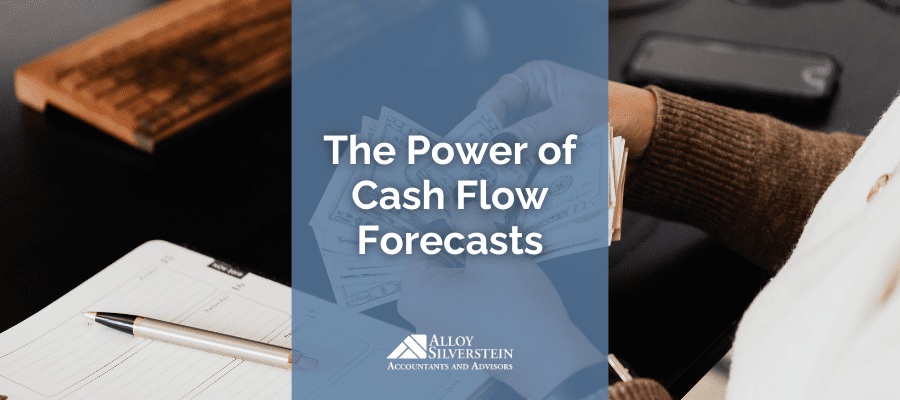All owners understand the #1 rule of business – don’t run out of cash! But whether you’re a seasoned business owner or new to the playing field, this is often easier said than done. One method of getting a better handle on your business’s cash flow is by creating a cash flow forecast. The basics A cash flow forecast shows an estimate of the cash coming in and going out of your business over a defined timeframe. One of the more popular formats is a rolling 12-month forecast that allows a business to account for a full cycle of any seasonality in addition to large, single or periodic cash outlays.
- Identify cash bottlenecks. Maybe you have a group of customers habitually making late payments, or your inventory is not turning quickly, so it is not turning back into cash quickly enough. A cash flow forecast can help you identify bottlenecks like these that prevent cash from flowing back into your business.
- Budget for future payments. Large payments typically loom for every business, such as an annual insurance bill or making quarterly estimated tax payments. Other businesses know they have large inventory purchase requirements leading into the holidays. A cash flow forecast can help you set aside enough money to pay your monthly, quarterly, and annual obligations.
- Prepare for low revenue months. For businesses who are seasonal or don’t earn their revenue evenly throughout the year, a cash flow forecast can help ensure that you’ve got enough money to pay the bills during cash flow negative months.
- Requested by many outside parties. Bankers, shareholders, investors, and other outside parties may request a cash flow forecast in addition to a balance sheet, income statement, and statement of cash flows. A cash flow forecast can be a big help in determining when to ask for a line of credit, often best done when it doesn’t look like you need it!
- Project appraisal and business planning. A cash flow forecast lets you calculate multiple business scenarios and assess whether a particular project would be worth pursuing. Consider running at least three scenarios – a best case, a worst case, and one case in the middle.
Building the forecast
A cash flow forecast starts with your income statement. Adjust the statement by pulling out non-cash items like depreciation to get operational cash. Next, track changes in cash inflows and outflows from your balance sheet accounts to get a cash balance for the period. Take the monthly cash change and see the cumulative effect over time. Forecasting future periods allows you to easily see when your business will have excess cash and when you might be in a negative cash position long before it occurs! Please call if you’d like help creating a forecast for your business.
